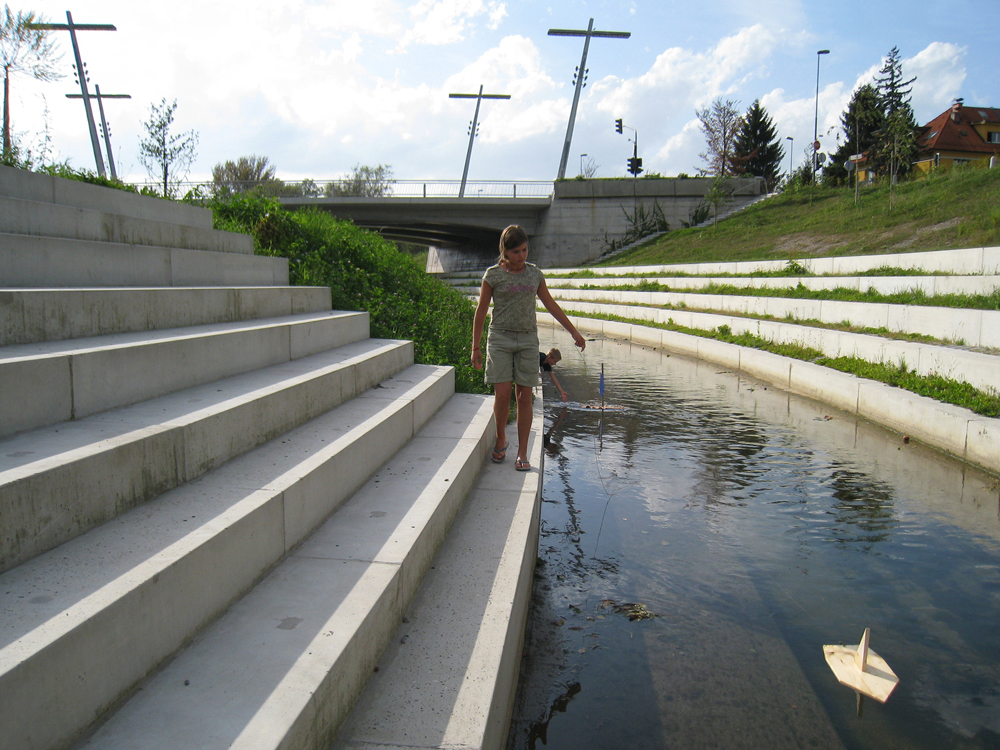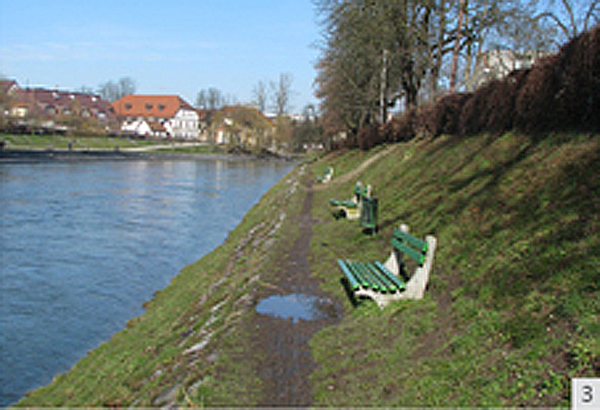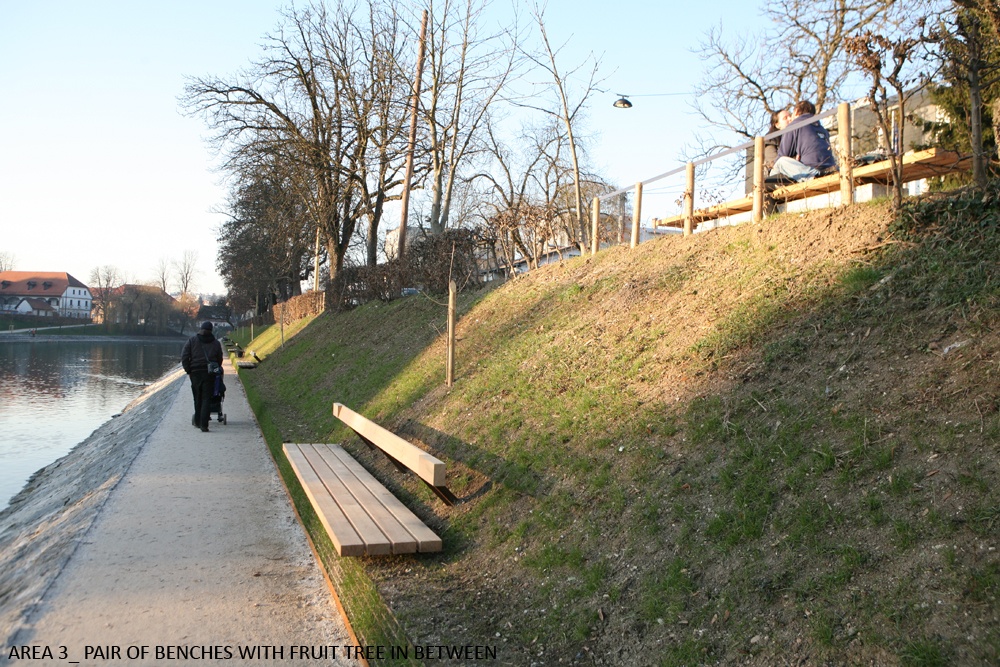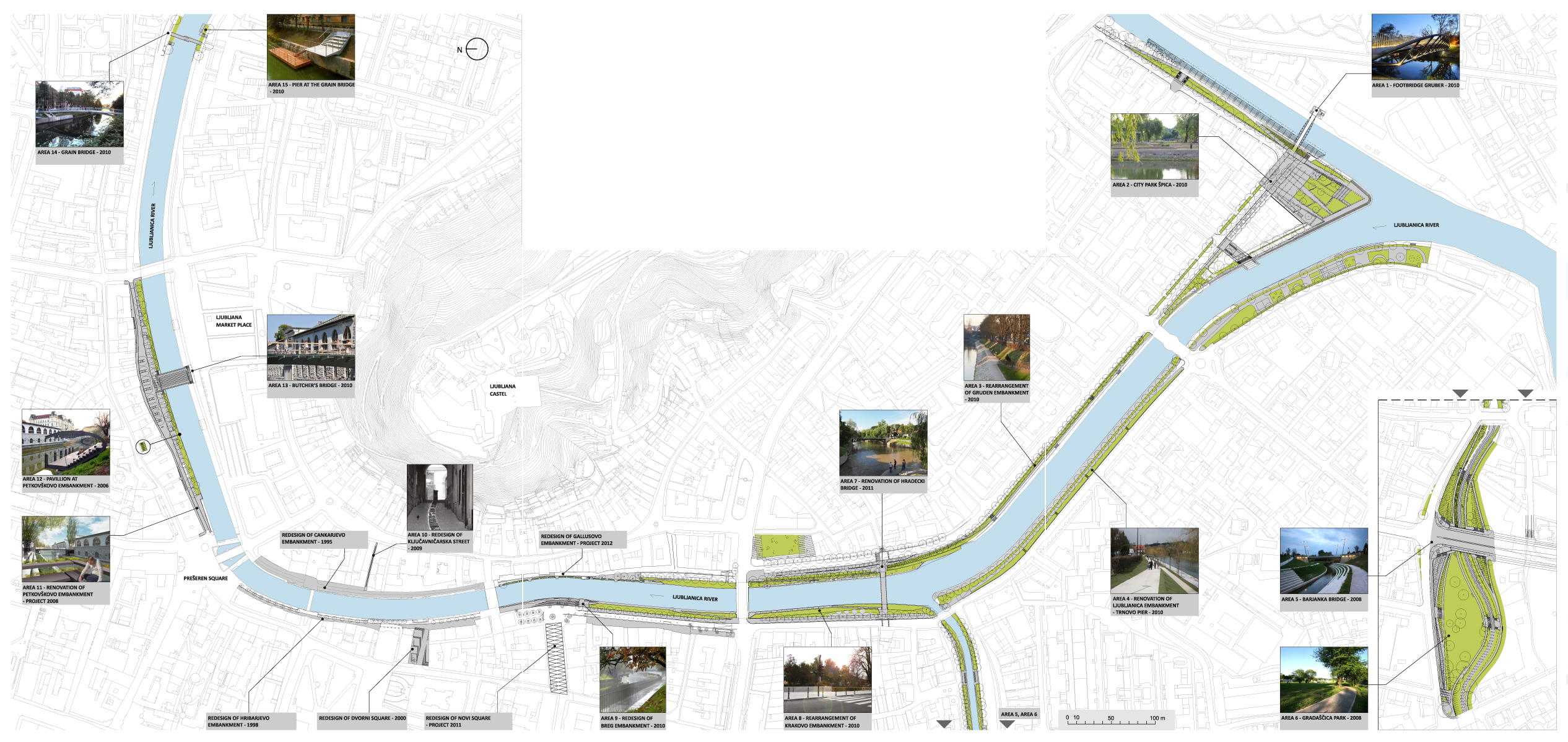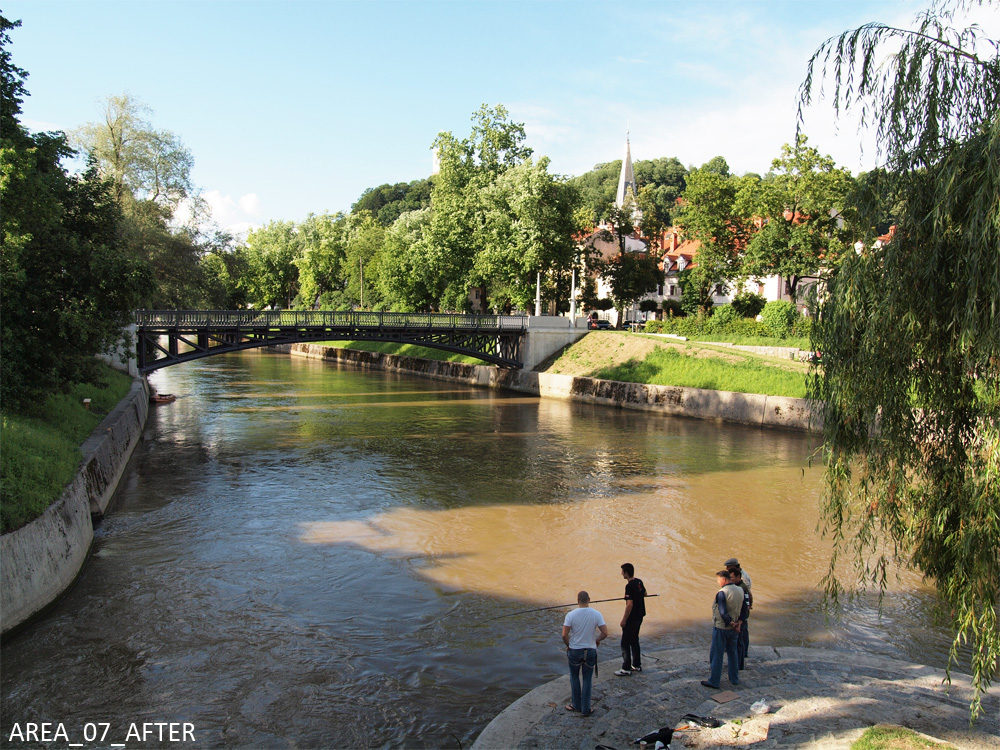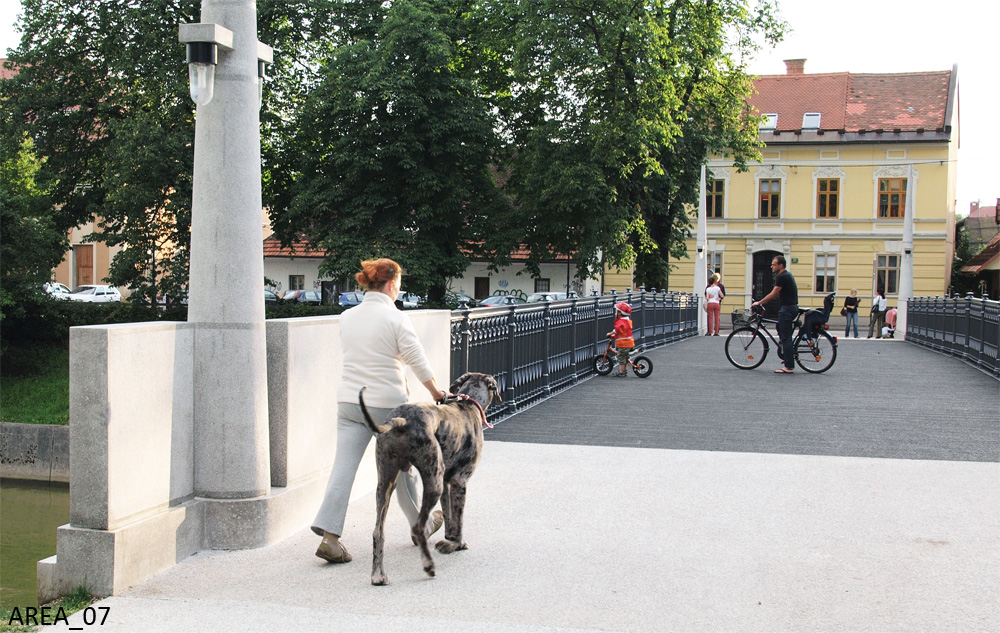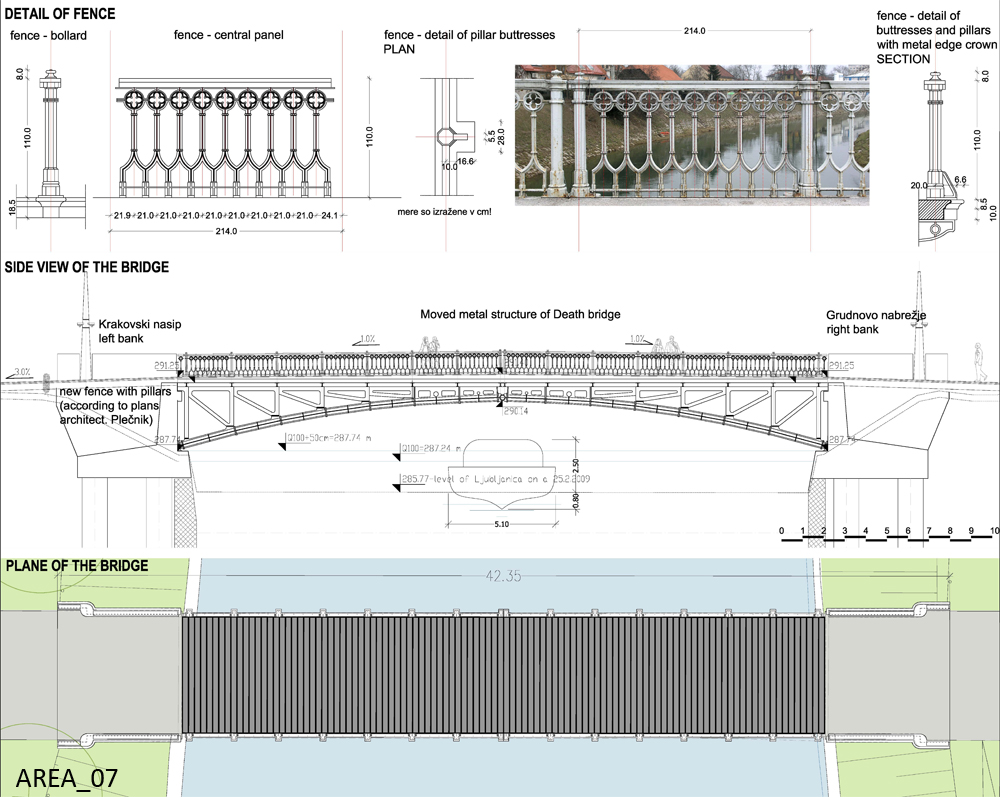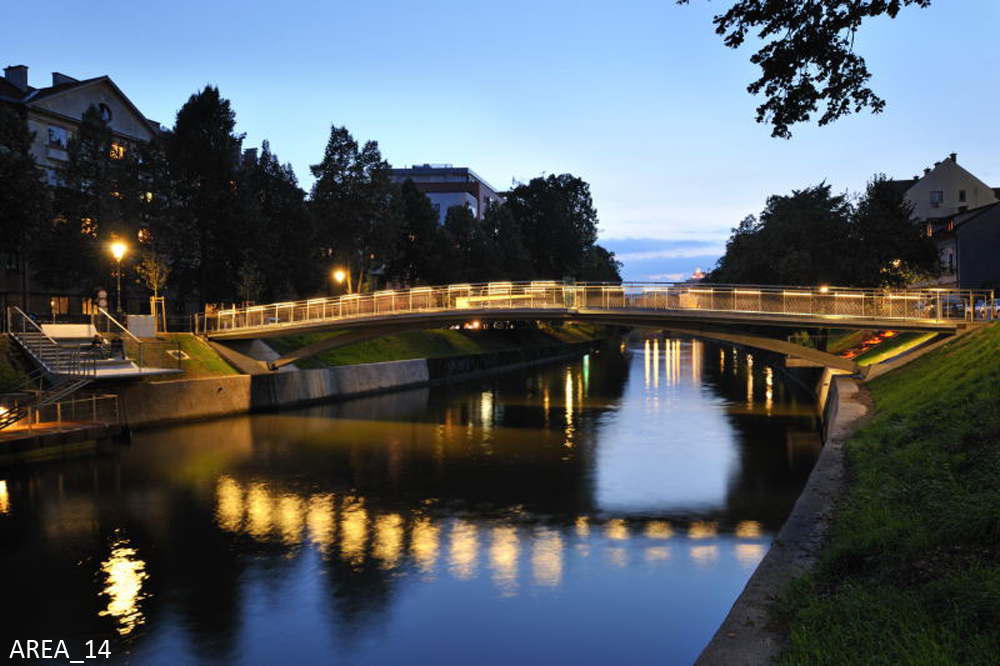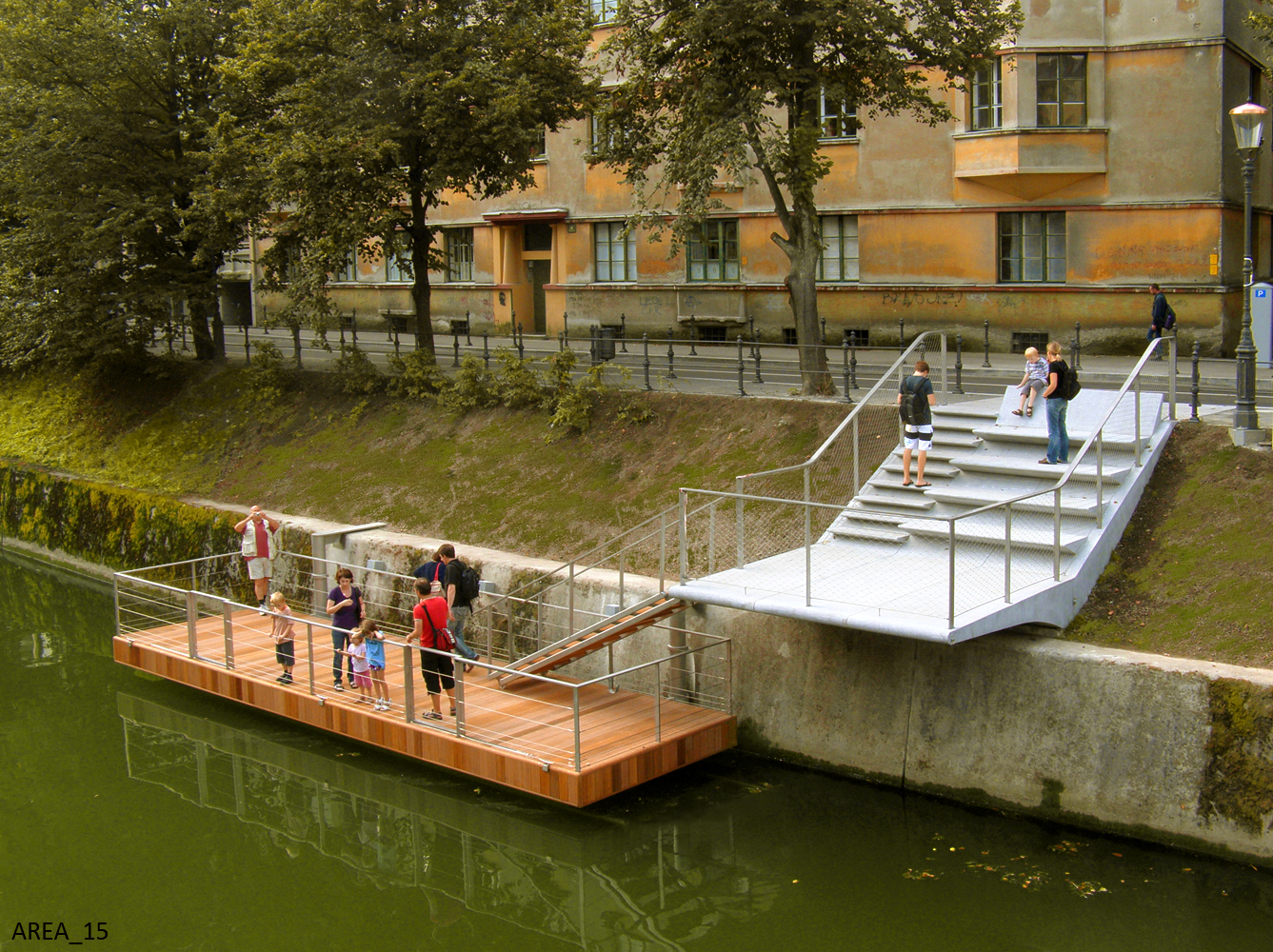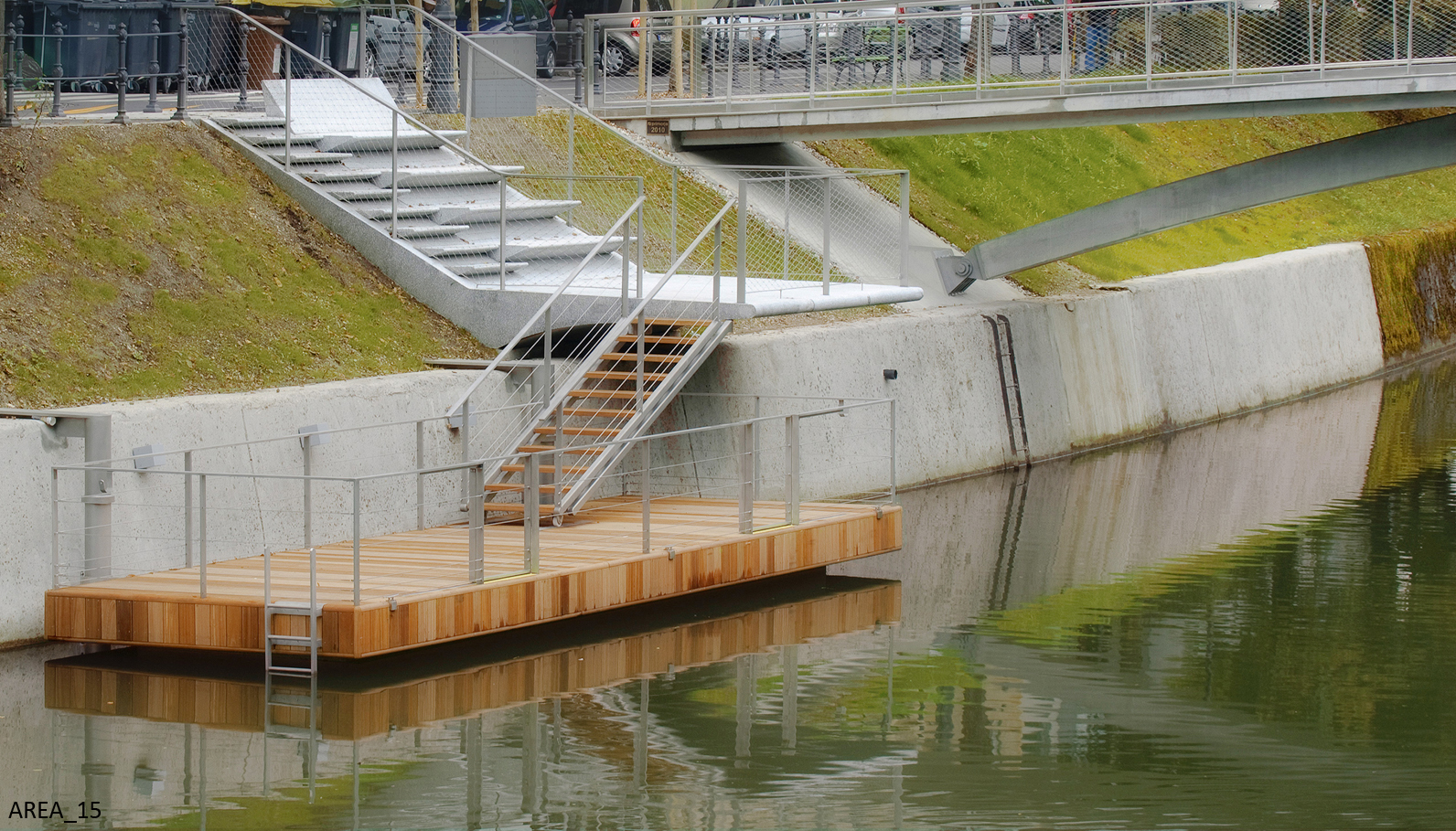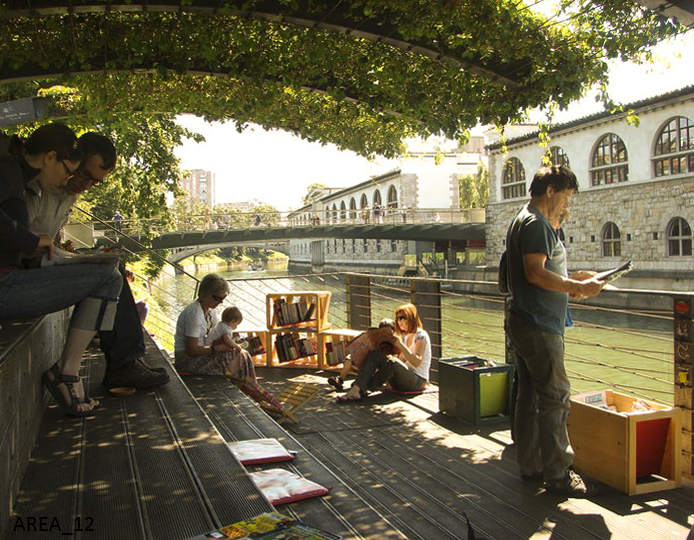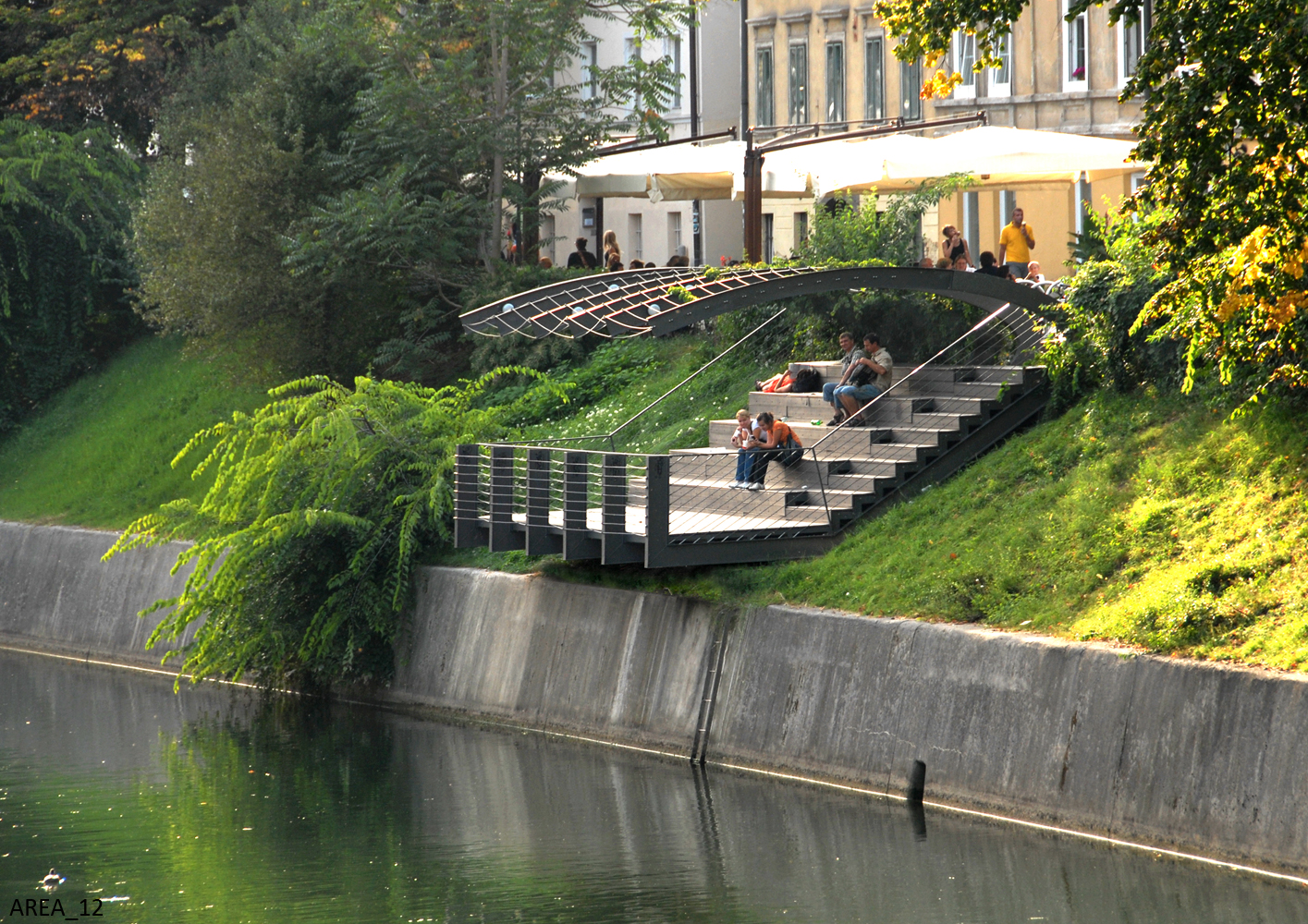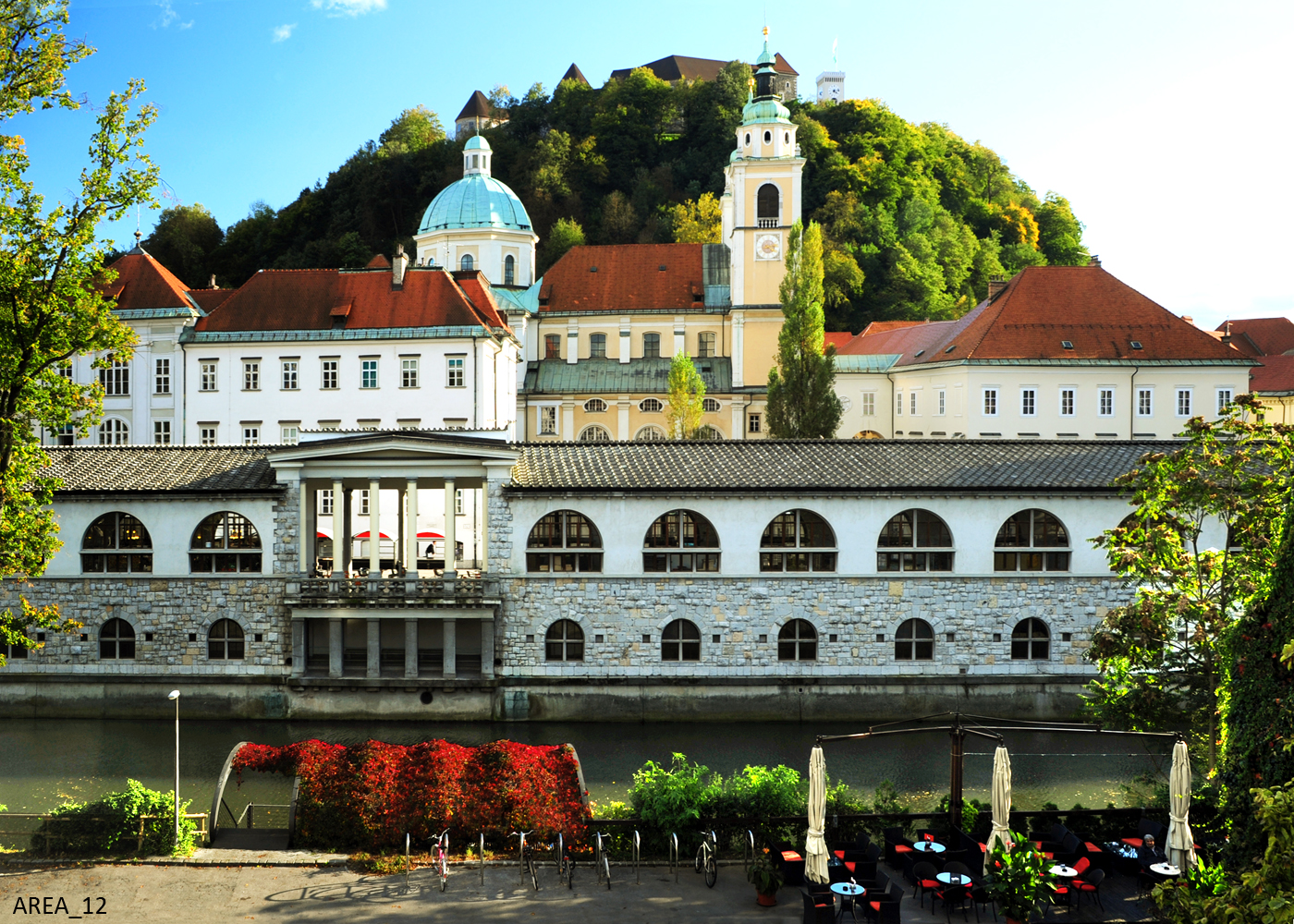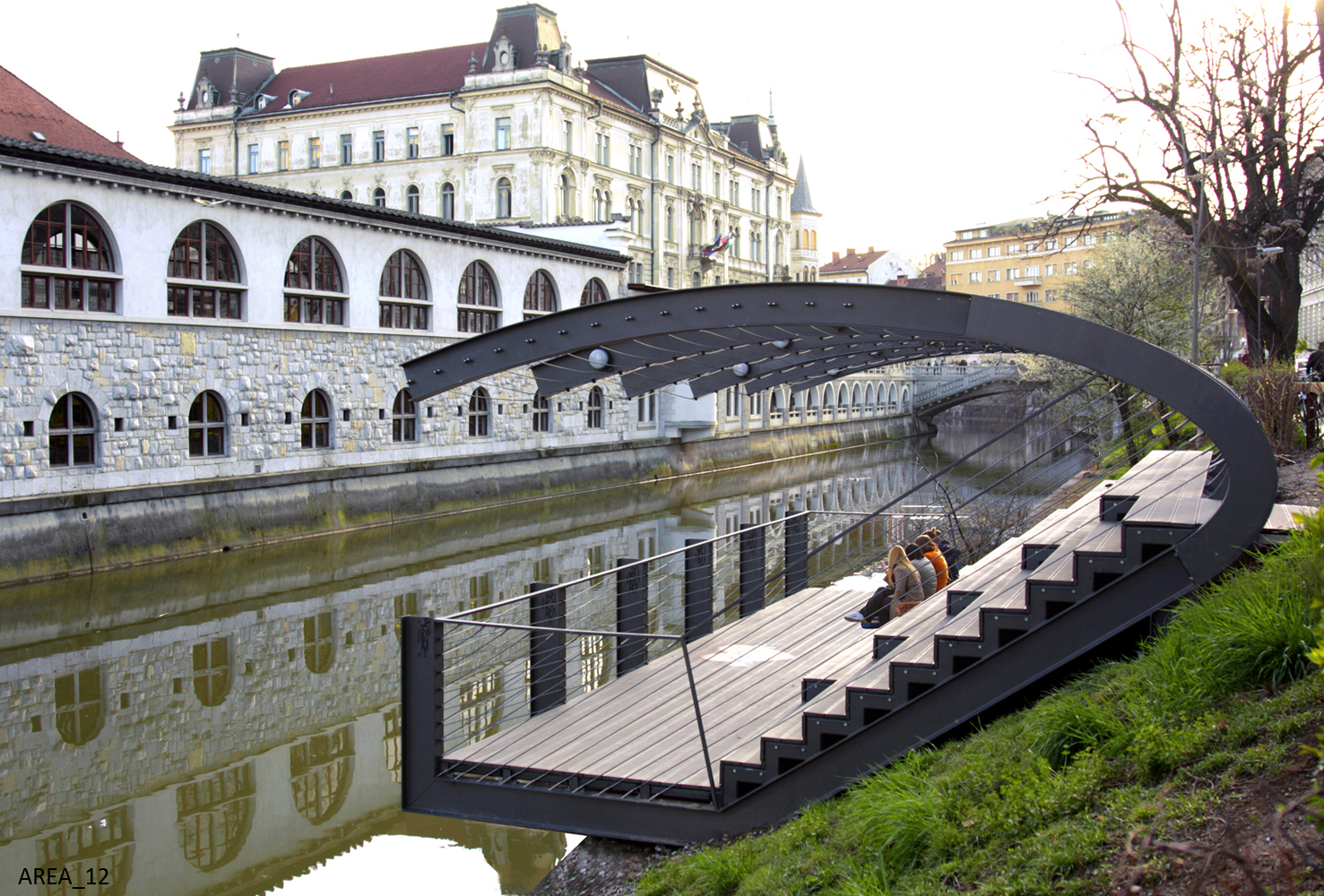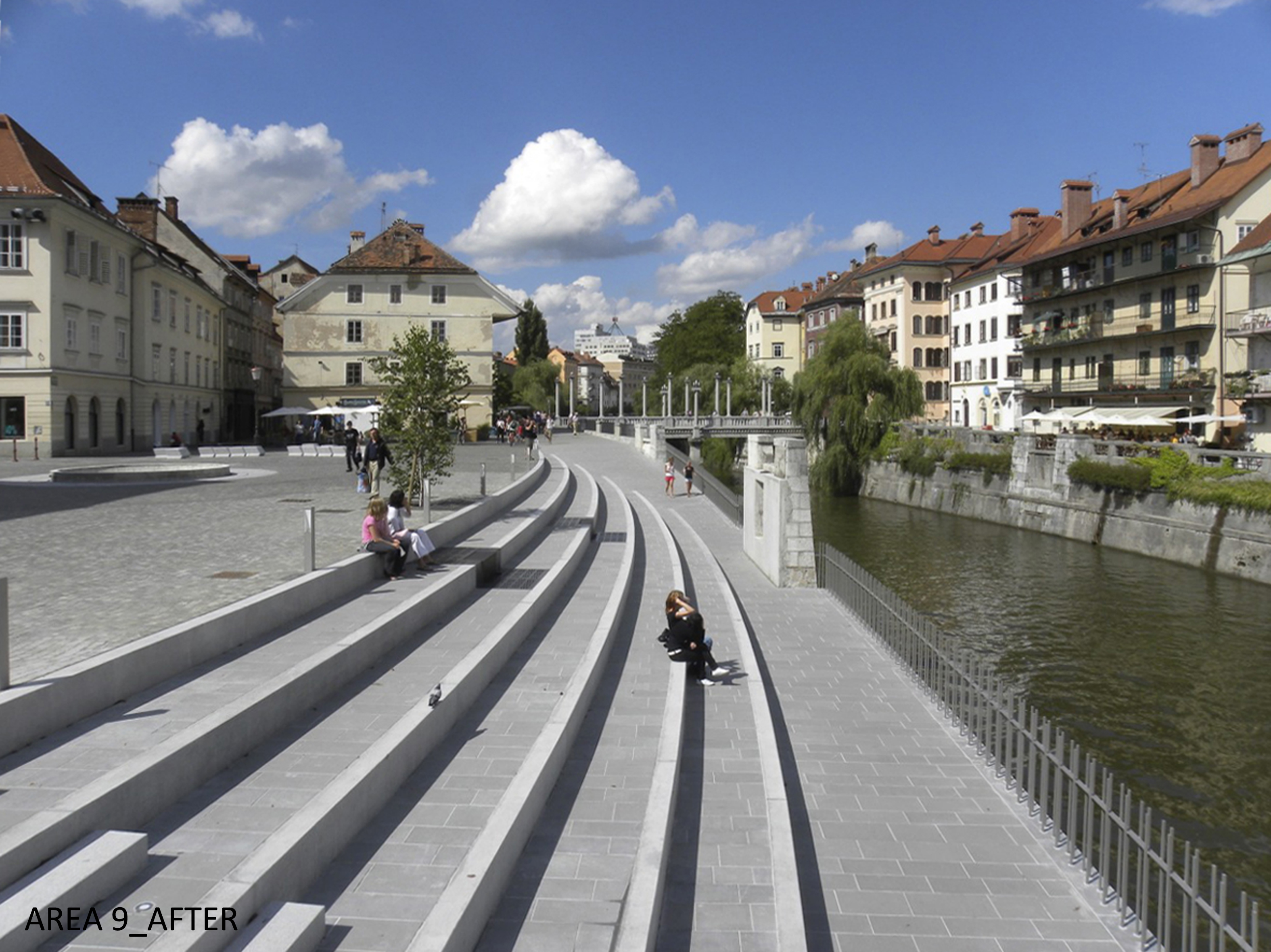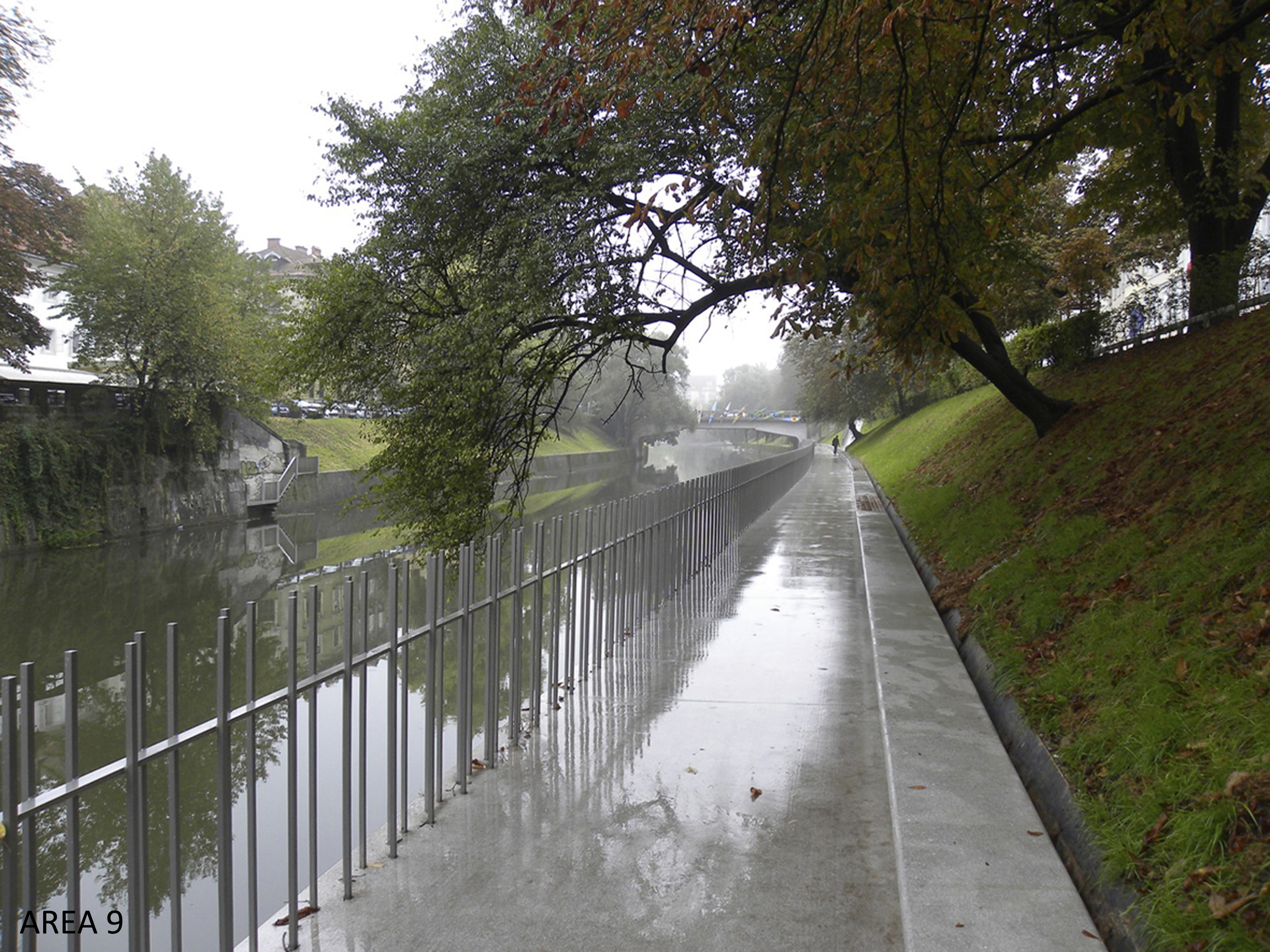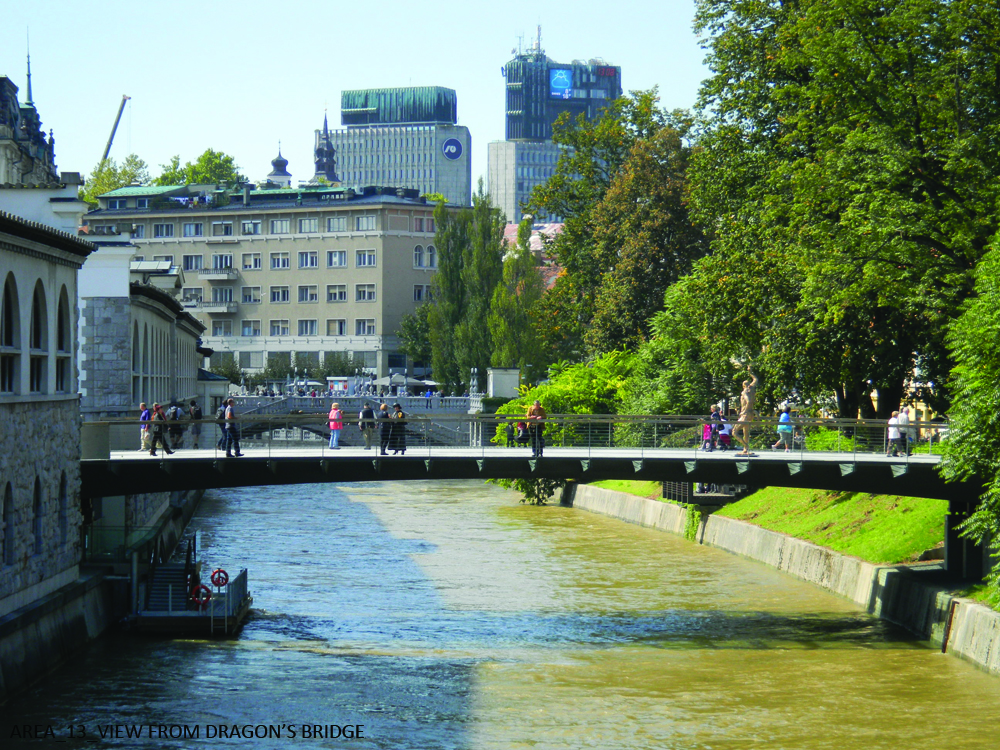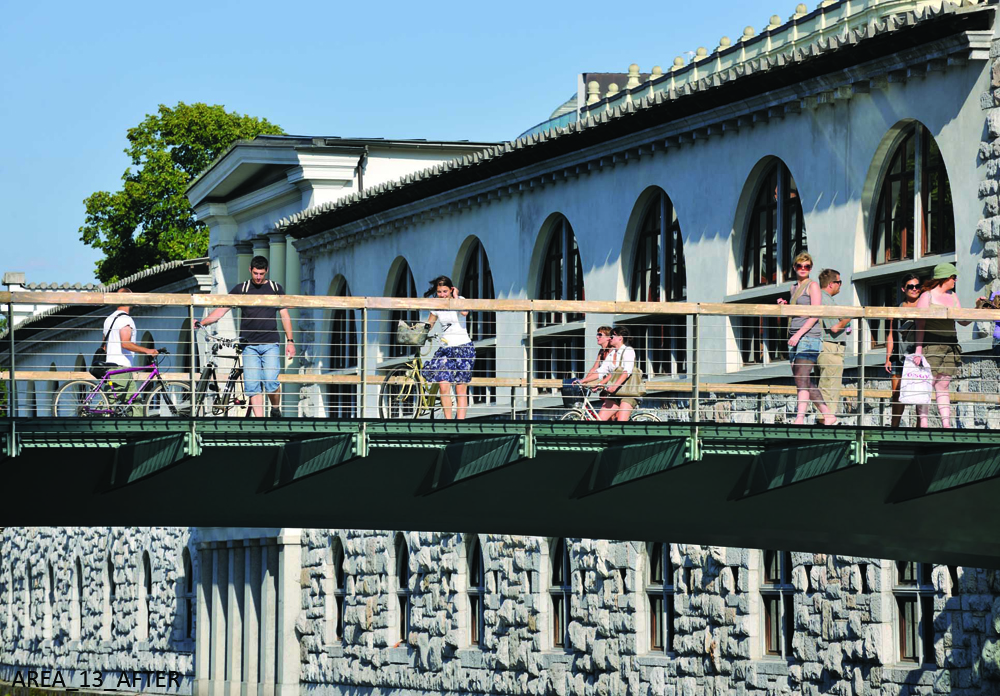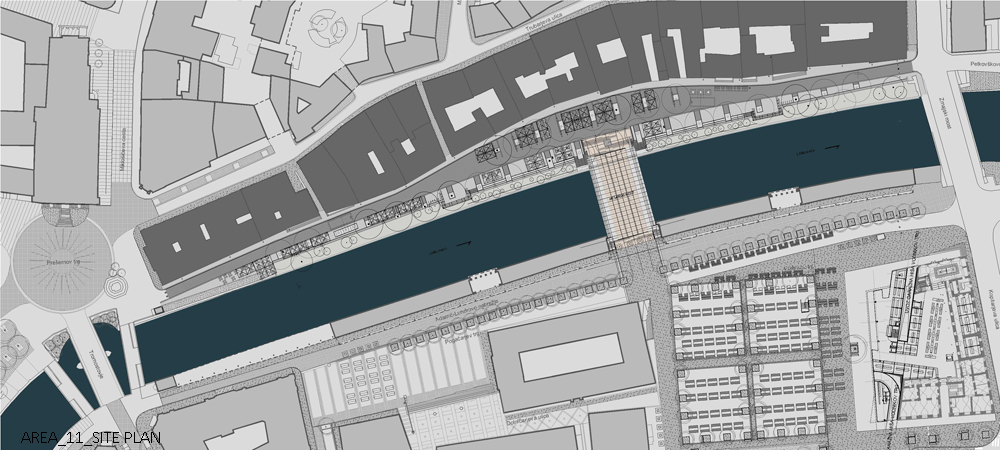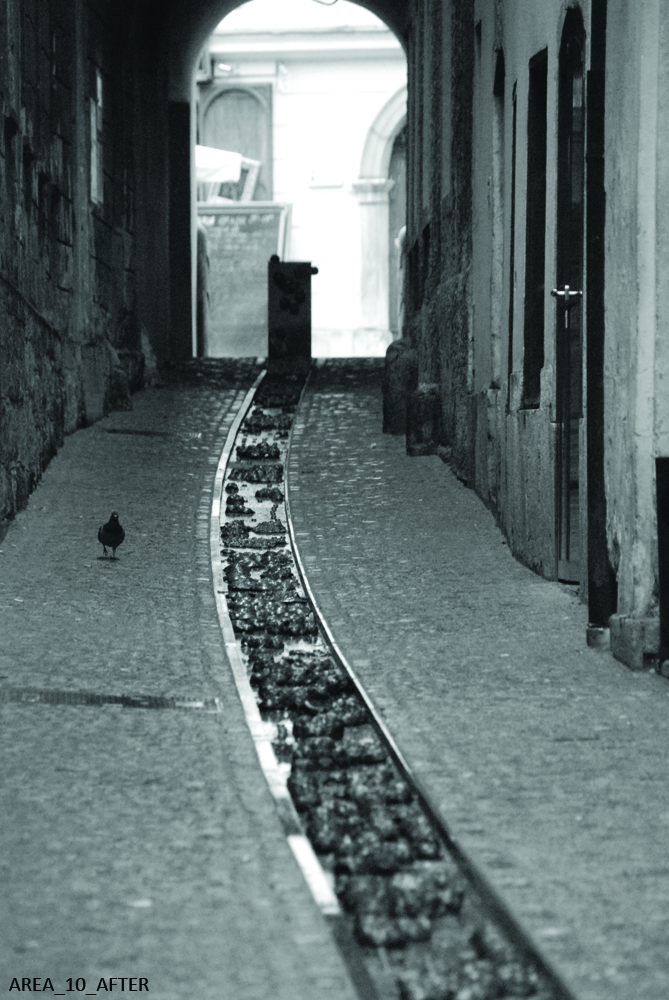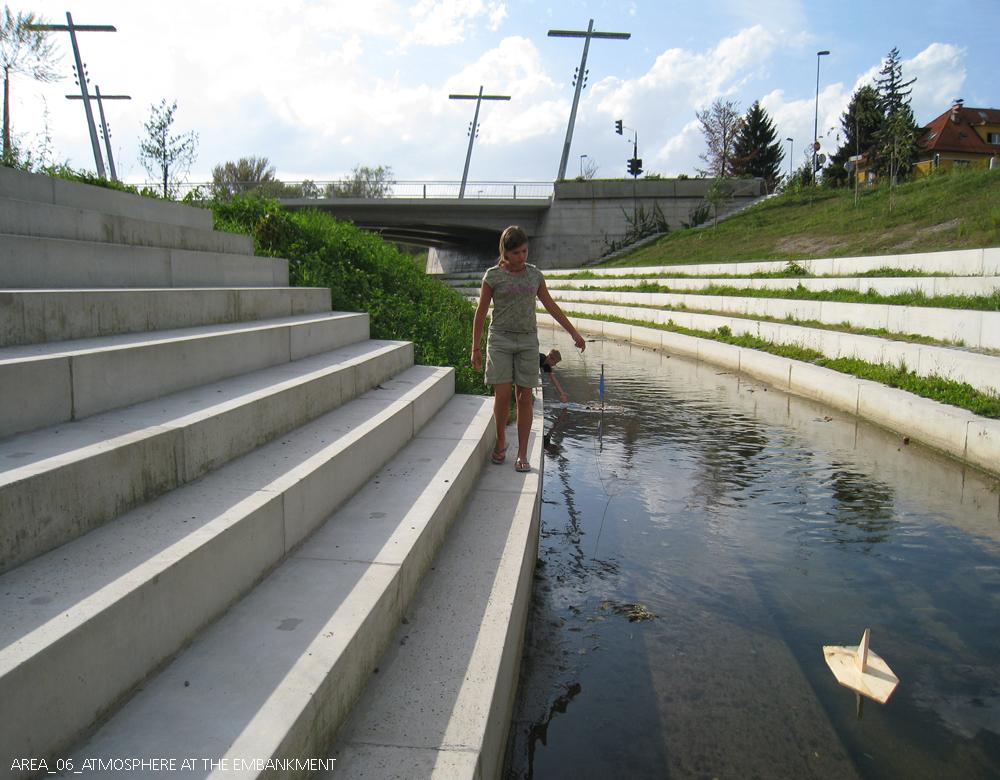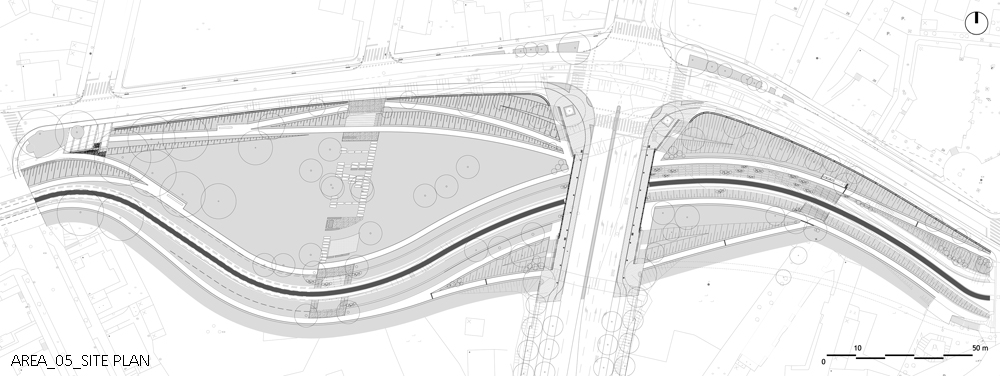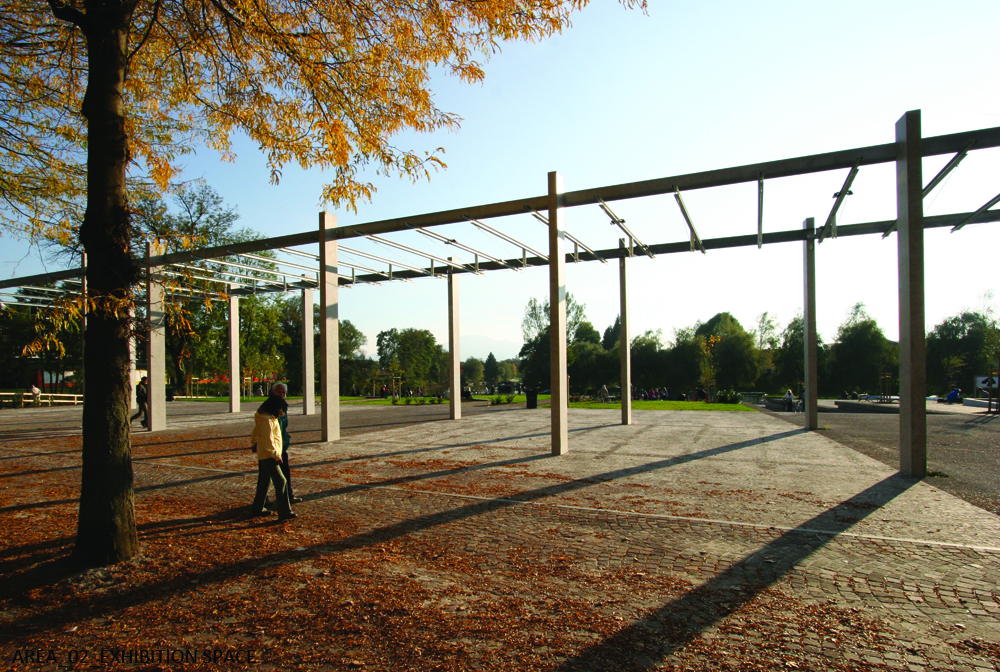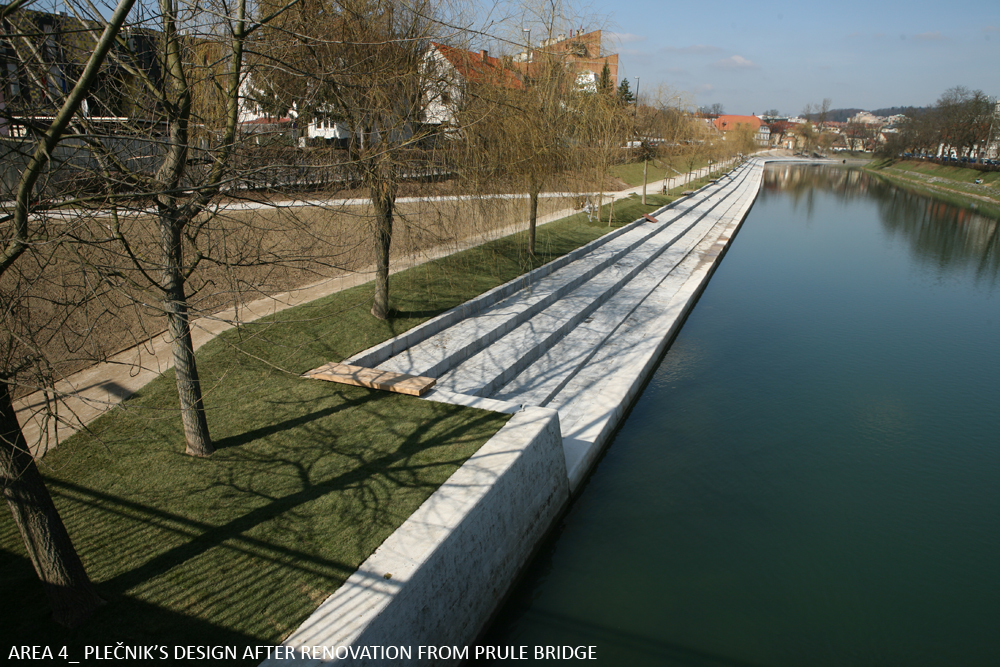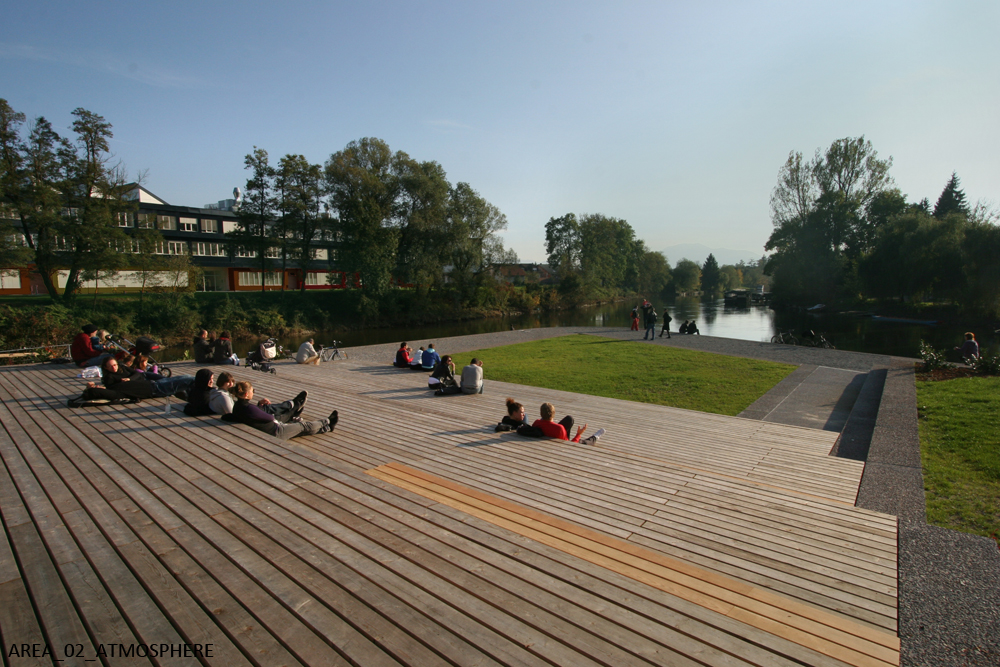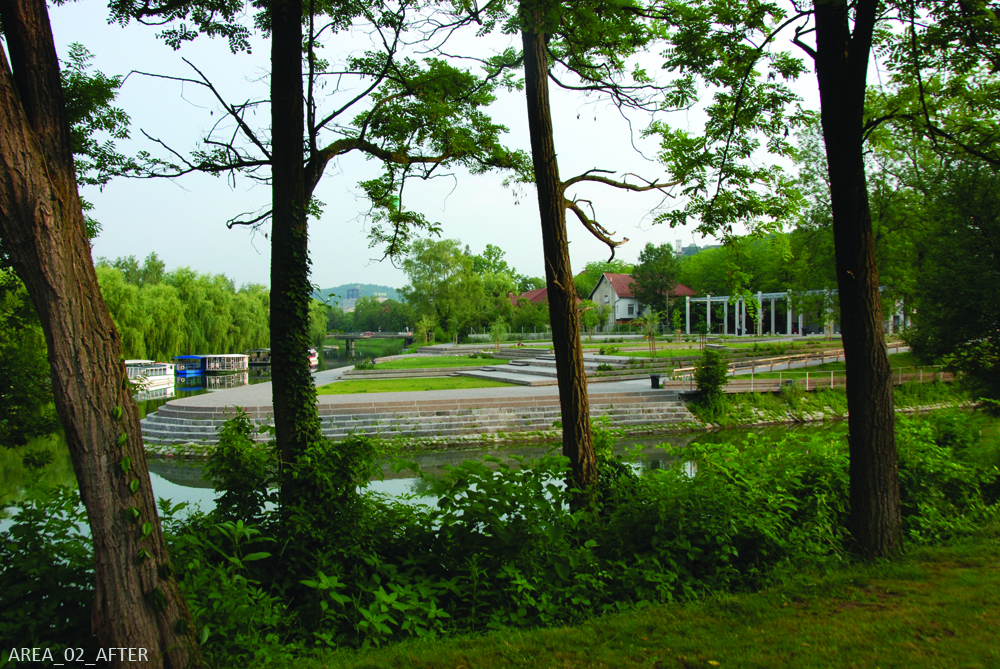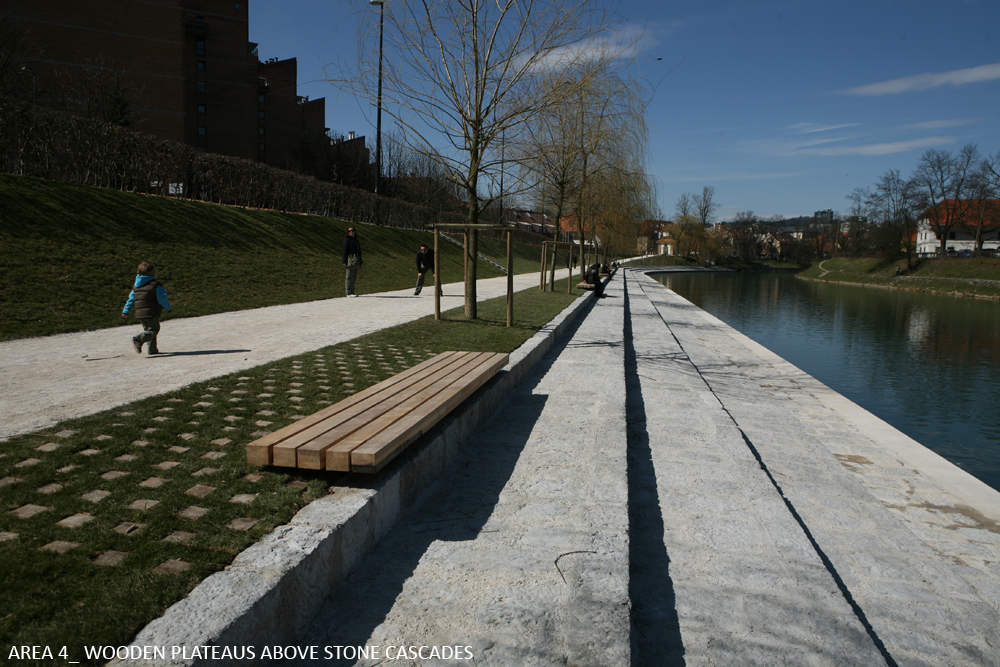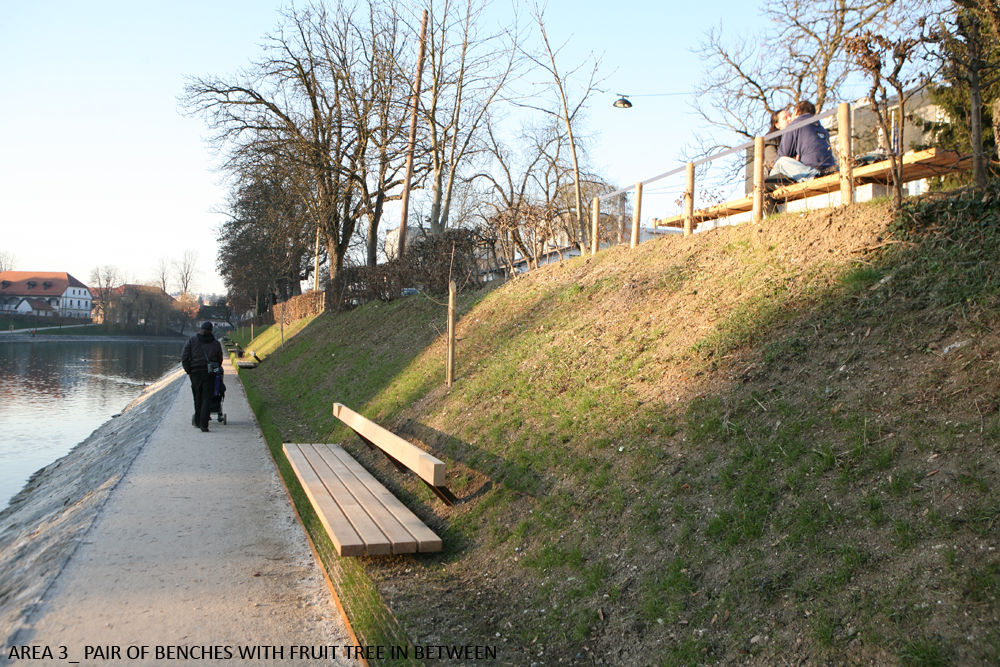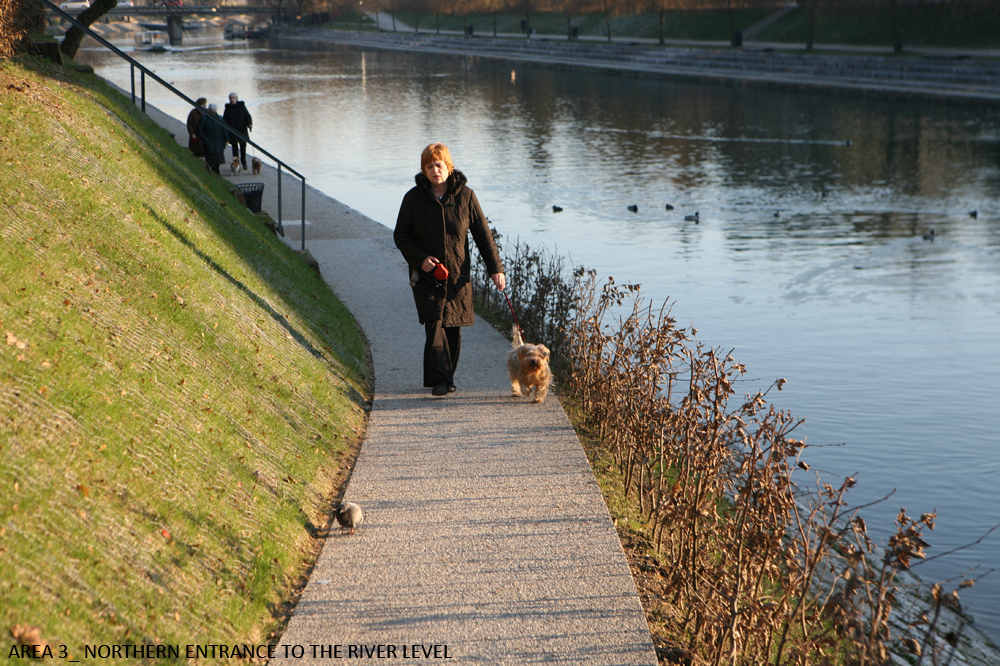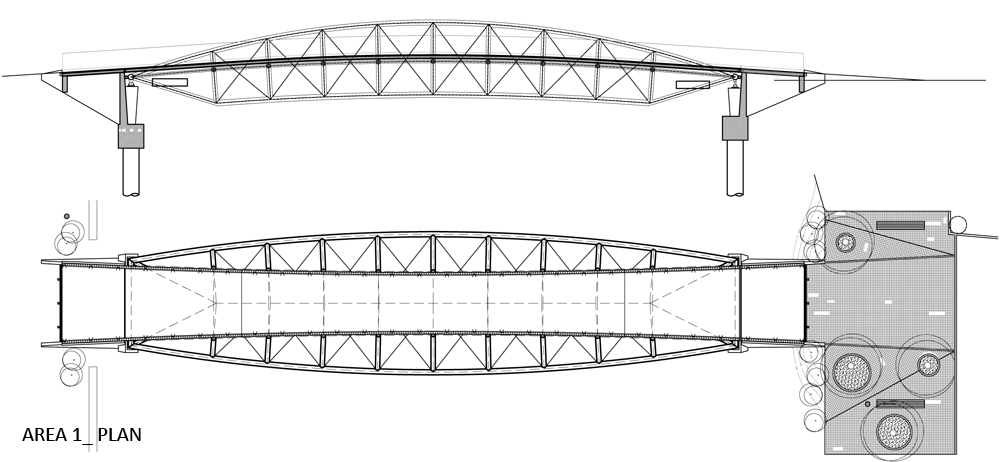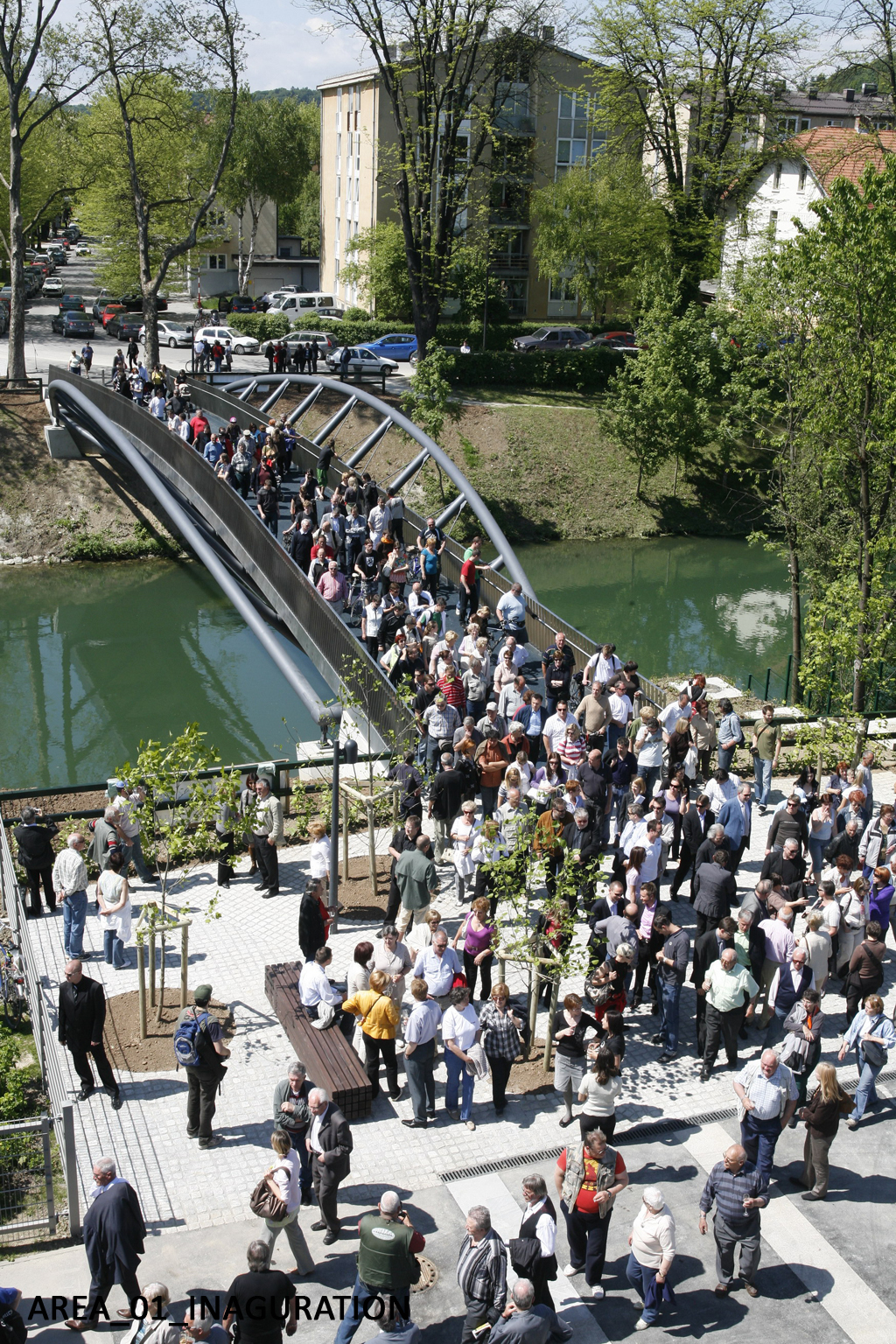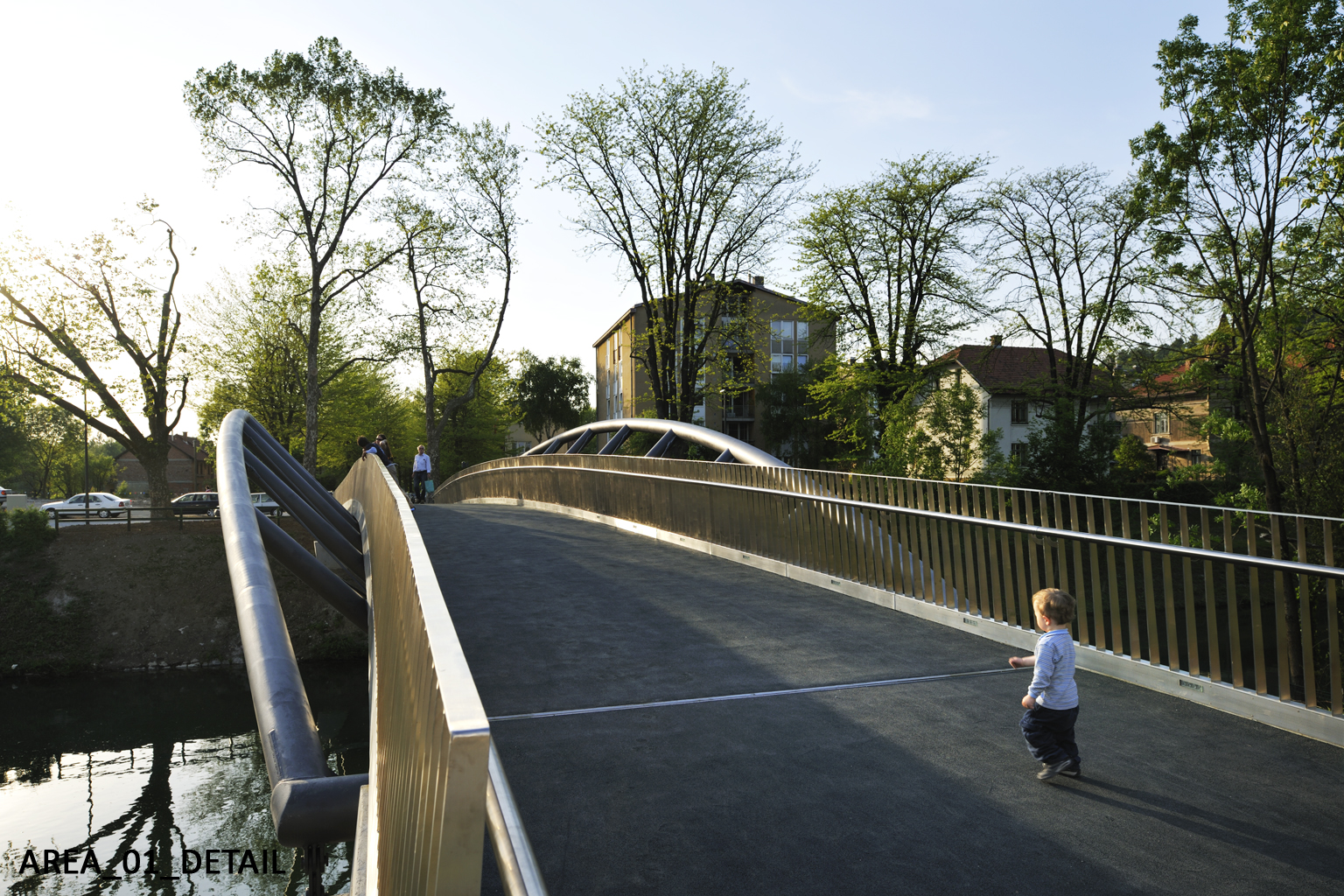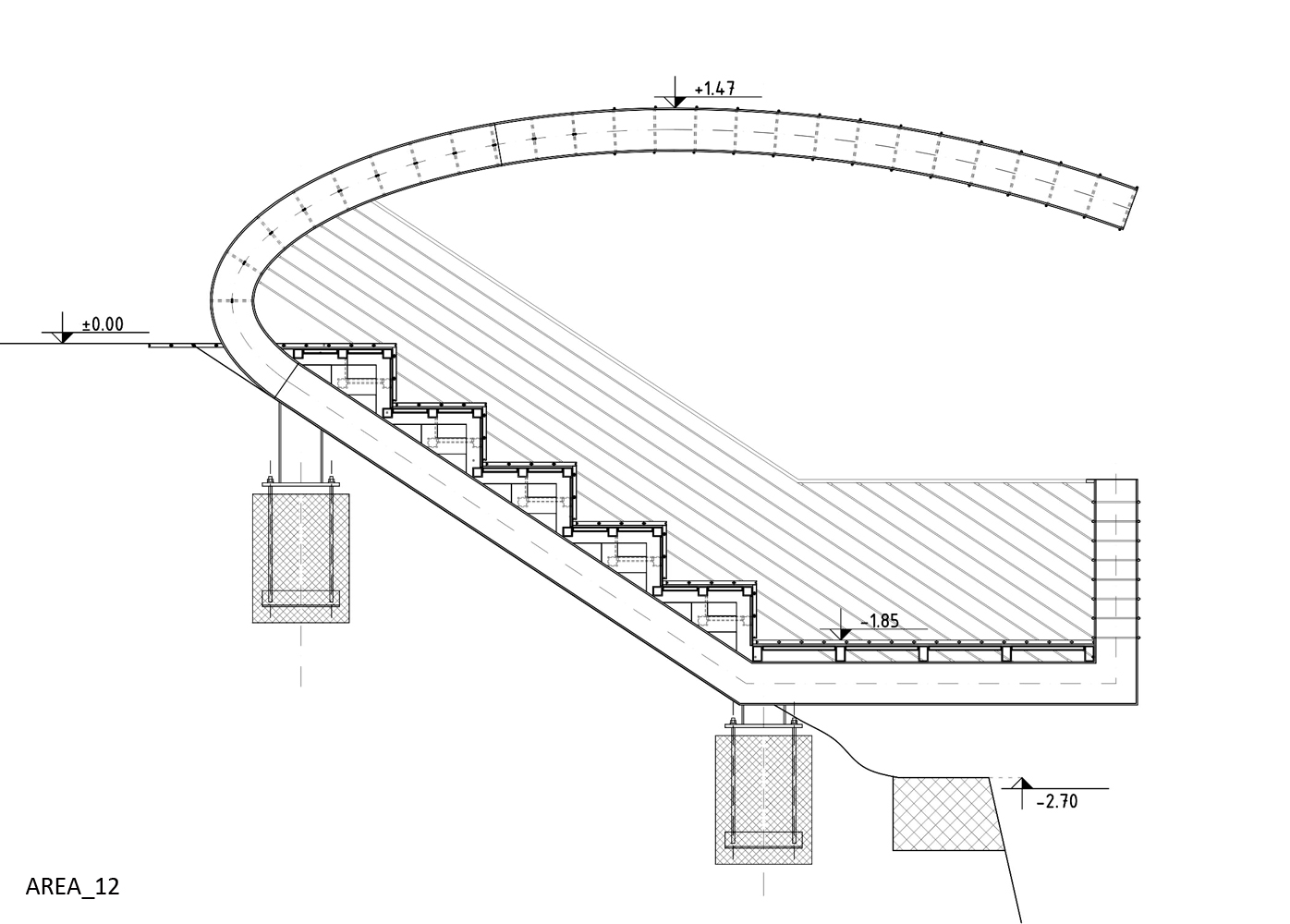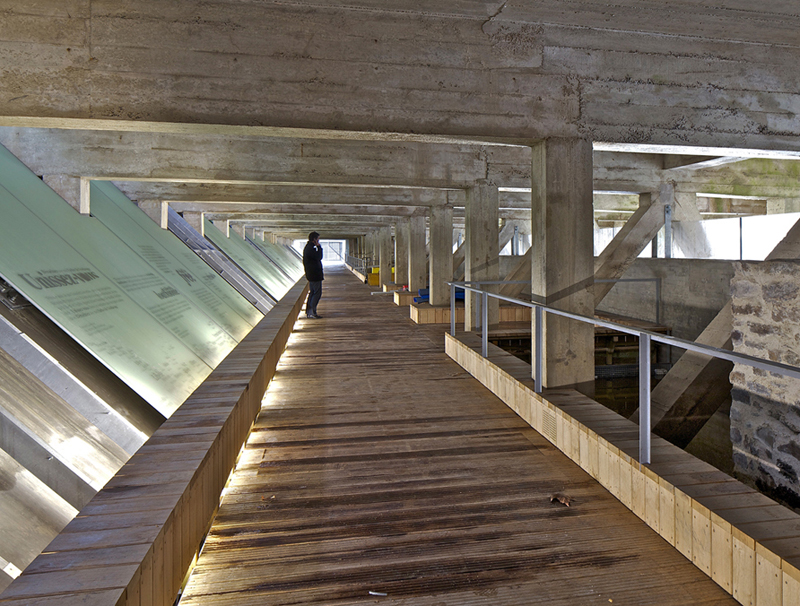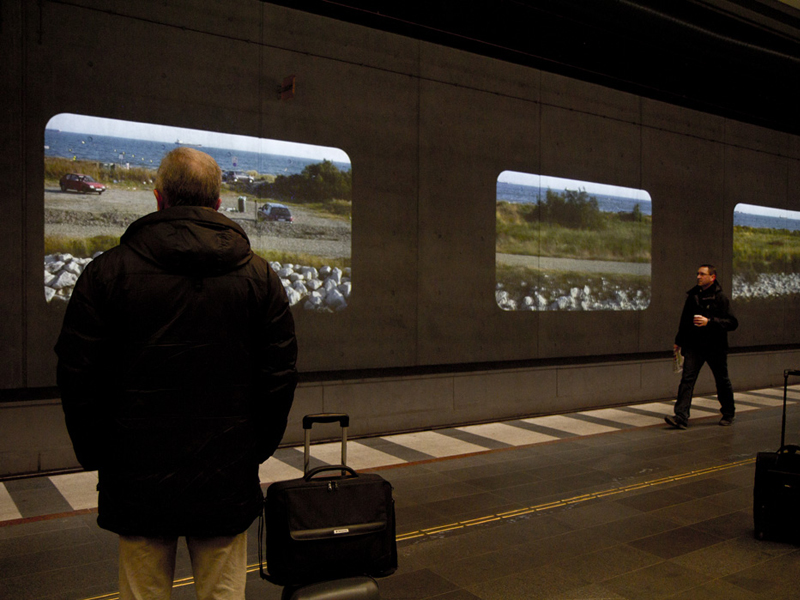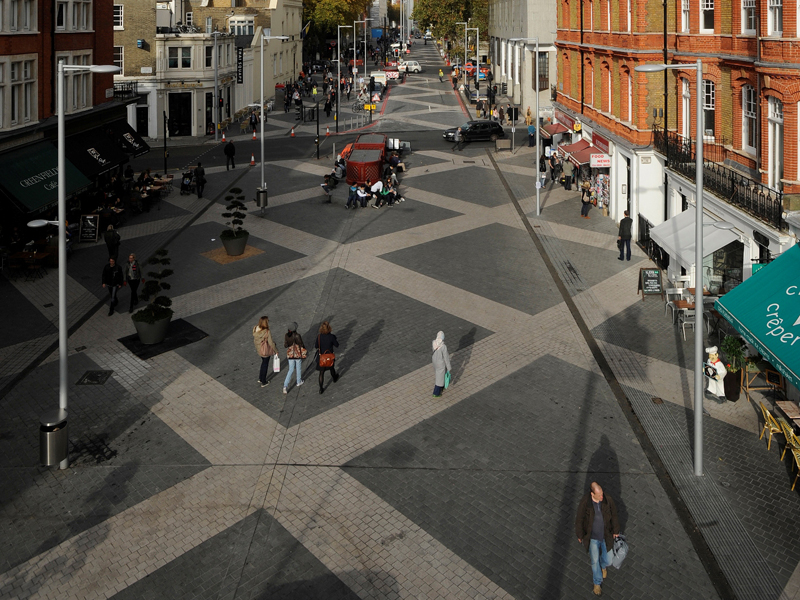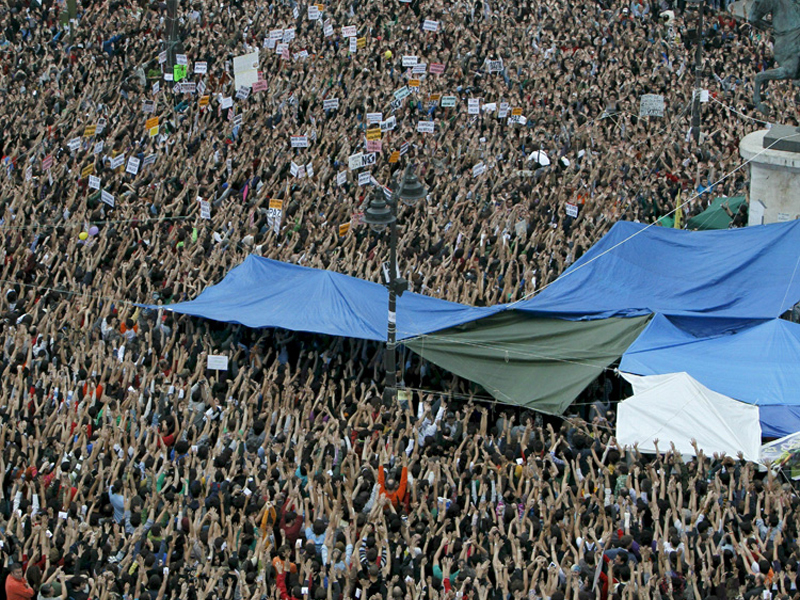Previous state
After entering the capital of Slovenia from the south, the River Ljubljanica describes a pronounced loop around the northern slope of Castle Hill, after which it moves away from the city centre in an easterly direction. In the eighteenth century, the Gruber Canal (Grubarjev prekop) was opened up in an attempt to remedy frequent flooding, cutting through the southern end of the promontory and thus confining the old city centre on an island. Exceptionally well preserved, this isolated historic area has accumulated a generous repertoire of architectural styles which, from the Baroque era through to the Vienna Succession, reflect the position of Ljubljana as a cultural and geographic crossroads between the Latin south and the Germanic north. Once the river had been tamed, it was possible to expand northwards thanks to the construction of a considerable number of bridges.
Some of the most remarkable of these bridges, such as the Triple Bridge (Tromostovje, 1932) and the Cobblers’ Bridge (Čevljarski most, 1931), are work of the architect Jože Plečnik who, after the 1930s, marked the river’s course with a profuse and varied collection of buildings, squares, canals, embankments and riverside parks. Recognising the structural role of the river and endowing it with a welcoming and cultured monumentalism, Plečnik aimed to transform Ljubljana into a new Athens, an enlightened model city. With this objective, he used the archetype of the stoa to organise the right bank by means of the portico of the Tržnica market, and the model of the agora to construct Congress Square (Kongresni trg) on the left bank.
By the beginning of the twenty-first century, however, the river had lost the spirit that Plečnik had managed to give it, to the extent of being divested of its leading role as the city’s preeminent public space. Lacking up-to-date infrastructure, the majority of river spaces had been subordinated to vehicular traffic and indiscriminate parking, while very few were exclusively pedestrian. This drastically undermined the appeal of the old centre which was also suffering from the economic effects of a decline in business activities and abandonment by a population that preferred to go and live on the outskirts. The combination of circumstances threatened Ljubljana with all the damaging consequences of urban sprawl.
Aim of the intervention
After 2004, the Ljubljana City Council, working with a number of municipal enterprises, decided to make an ambitious public investment of more than twenty million euros in order to redress this situation. In a remarkably brief period of time, it coordinated several teams of local professionals who worked on a series of specific, realistic and viable interventions which, however, were organised within one large-scale urban system.
The River Ljubljanica, as the guiding principle of this system, was to resume the role it had been given by Plečnik. It was expected that an improved quality of open-air life in the environs of its waters would foster sociability and stimulate the old city’s economic revival. In brief, the aim was to enhance the city centre’s power of attraction in order to combat the negative trend towards urban sprawl.
Description
Covering more than two kilometres of riverbank spaces, the intervention begins upstream at the point where the original course of the River Ljubljanica flows away from the Gruber Canal. A new footbridge (2010) links the Botanic gardens of the University of Ljubljana, Slovenia’s oldest scientific and educational institution, with the new Špica (City Park, 2010), a green riverbank space that adds a finishing touch to the southern point of the island on which the city centre is located. A landscaping project along the first three hundred metres of the left bank of the canal highlights both its natural character and its accessibility.
The Trnovo embankment has also been renovated (2010) on the left bank of a reach of the river which, seven hundred metres downstream, flows into the Gradaščica River, a branch of the Ljubljanica. The meeting of this smaller river with Barjanska Road, a main thoroughfare providing access to the city, has been resolved by means of a new bridge (2008), which bears the road’s name, and a riverbank park (2008), also known as the Špica. The new viaduct is not far from the centrepiece of the Trnovo district, the Trnovo Bridge, which was built by Plečnik.
Downstream on the River Ljubljanica, a short distance from the junction with the Gradaščica River, the banks take on a more urban appearance. At this point, the old Hradecki Bridge has been renovated (2011), as have the Krakovo and Breg embankments (both in 2010) on the left bank. The Breg embankment has steps leading up to the Nova Square (Novi trg), which is also scheduled for renovation. This is one of the city’s oldest squares and it adjoins the National and University Library, which was also built by Plečnik.
A hundred and fifty metres further on, in the direction of flow and still on the left bank, are the Hribarjevo embankment and the Dvorni Square, both of which were renovated shortly before this intervention. On the opposite bank and perpendicular to the Cankarjevo embankment is Ključavničarska Street (2009), which leads up to Castle Hill. This street has also been restored. On the left bank, after Triple Bridge, the Petkovškovo embankment has been refurbished with a pavilion built out over the river with projecting steps constructed with the aim of offering a fine view of Castle Hill. The new, exclusively pedestrian Butchers’ Bridge (2010) links the centre of the Petkovškovo embankment with the stoa that Plečnik built as the riverfront façade of the Tržnica market. Some four hundred metres downstream, the intervention finishes with the introduction of the new Grain Bridge (2010), which has projecting steps connecting with a floating pier.
Assessment
The renovation of the riverside areas of the River Ljubljanica as it flows through the old centre of the capital is fruit of a collective effort which, concentrating available resources in specific operations and optimising coordination between different developers and authors, has embraced Plečnik’s humanist dream and given it continuity. The banks are wholly accessible, both in the longitudinal sense of their embankments and in the transversal sense that the project establishes with the different types of adjoining urban fabric. A unitary public space and yet, at the same time, one that that is endowed with a profusion of special parts, the river now gives the old city centre sufficient power of attraction to counteract the centrifugal effects of urban sprawl.
David Bravo
Translation by Julie Wark
[Last update: 25/04/2021]



